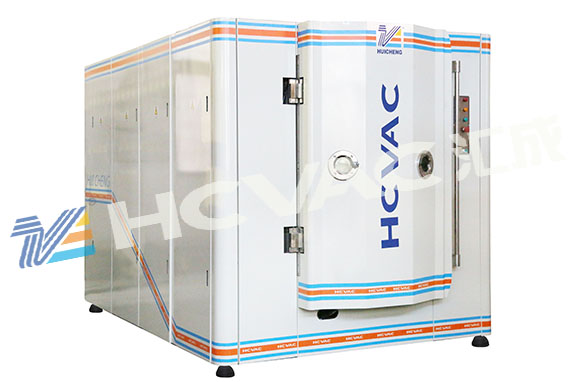At present, the vacuum coating machine is the most widely used vacuum equipment for making vacuum conditions. It is generally composed of vacuum chamber, vacuum unit and electrical control cabinet. The exhaust system is composed of "diffusion pump+mechanical pump+roots pump+cryogenic cold trap+polycold". The company is specialized in the research, development and production of vacuum coating machine. It has an experienced technical team and high-quality after-sales service team to solve any problems encountered in the use of the equipment. Next, the composition and working principle of each part of the vacuum deposition machine are introduced in detail.

Vacuum body: The size of the vacuum chamber varies depending on the requirements of the processed product. Currently, the most commonly used ones include diameters of 1.3M, 0.9M, 1.5M, 1.8M, etc, The chamber is made of stainless steel material, which is required to be rust free and solid. Each part of the vacuum chamber has connecting valves to connect the various extraction pumps. Auxiliary extraction system: The exhaust system is an important part of the vacuum system of the coating machine, mainly composed of three parts: mechanical pump, booster pump (mainly introducing Roots pump), and oil diffusion pump. This exhaust system adopts "diffusion pump+mechanical pump+Roots pump+low-temperature cold trap+polycold" form. The exhaust process is as follows: the mechanical pump first draws the vacuum chamber to a low vacuum state of less than 2.0 * 10-2PA, providing a prerequisite for the subsequent vacuum pumping of the diffusion pump. Then, when the diffusion pump draws the true cavity, the mechanical pump and the oil diffusion pump form a series connection to complete the air pumping operation in this way.
Mechanical pump: also known as pre stage pump, mechanical pump is the most widely used low vacuum pump. It uses oil to maintain sealing effect and relies on mechanical methods to continuously change the volume of the suction cavity inside the pump, causing the volume of gas in the pumped container to continuously expand and obtain vacuum.
1. Classification of mechanical pumps: There are many types of mechanical pumps, commonly used including slide valve type (mainly used in large equipment), piston reciprocating type, fixed plate type, and rotary plate type (currently the most widely used, this article mainly introduces).
2. Mechanical pumps start working from the atmosphere, and their main parameters include ultimate vacuum and pumping rate, which are important basis for the design and selection of mechanical pumps. A single stage pump can pump the container from the atmosphere to an extreme vacuum of 1.0 * 10-1PA, while a double stage mechanical pump can pump the container from the atmosphere to 6.7 * 10-2 Pa or even higher. The pumping rate refers to the volume of gas that can be discharged per unit time when the rotary vane pump is operated at the rated speed. It can be calculated using the following formula: Sth=2nVs=2nfsL fs represents the cross-sectional area of the cavity at the end of suction, L represents the length of the cavity, the coefficient represents two exhaust processes per revolution of the rotor, and Vs represents the end of suction when the rotor is in a horizontal position. At this time, the volume in the cavity is the largest, and the speed is n. The exhaust effect of a mechanical pump is also related to the speed of the motor and the tightness of the belt. When the motor belt is loose or the motor speed is slow, the exhaust effect of the mechanical pump will also deteriorate. Therefore, regular maintenance and inspection are necessary. The sealing effect of the mechanical pump oil also needs to be inspected frequently. If there is too little oil, the sealing effect cannot be achieved, and the pump will leak air. If there is too much oil, the suction hole will be blocked, making it difficult to inhale and exhaust. Generally, Just 0.5 centimeters below the oil level line.
3. Mechanical pumps are often used to remove dry air, but cannot remove gases with high oxygen content, explosive and corrosive properties. Mechanical pumps are generally used to remove permanent gases, but they do not have a good effect on water vapor, so they cannot remove water vapor. The main components in the rotary vane pump are the stator, rotor, shrapnel, etc. The rotor is inside the stator but has a different mandrel from the stator, like two inscribed circle. Two shrapnel are installed in the rotor slot, and a spring is installed between the two shrapnel to ensure that the shrapnel is tightly attached to the inner wall of the stator.



